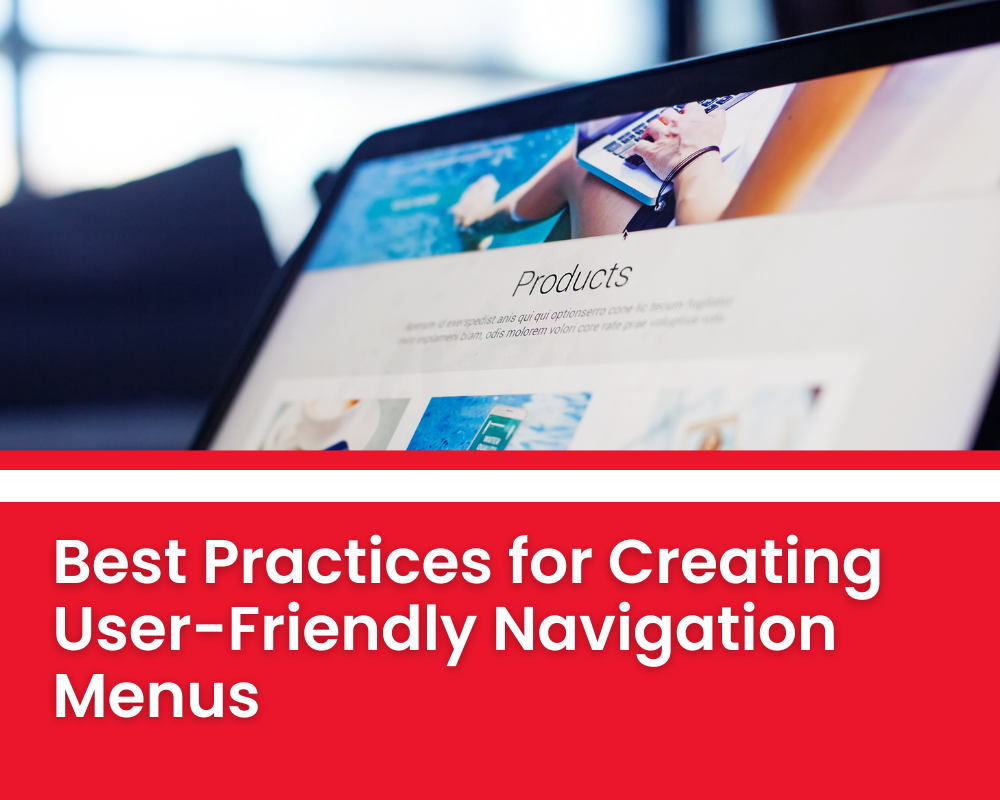The 6 Most Common Reasons Why Mobile Apps Fail
Mobile apps are a major part of our lives. They are used for everything from ordering food to staying connected […]
Dec 8, 2022
Feb 18, 2023

Creating a user-friendly navigation menu is one of the most important aspects of the Website creation process. A navigation menu serves as a map for users to explore your site. Therefore, it’s essential to make it easy to understand and use. In this article, we’ll share some best practices for creating a user-friendly navigation menu.
A navigation menu is a set of links that help users find their way around a website. It is what helps visitors get to where they need to go, and it allows them to easily move between different pages. Navigation menus are important because they provide structure and organization to a website, allowing users to quickly access the information they need. Without a navigation menu, visitors may become disoriented or frustrated in trying to find what they need on the site.
Navigation menus also make websites more user-friendly by providing an easy-to-use interface for visitors. Additionally, by having organized links that are grouped together, the user experience can be enhanced as visitors can more easily scan for relevant information. Navigation menus also allow websites to have hierarchical structures which makes it easier for search engines to crawl and index content, helping improve SEO performance of the website overall.
Navigation menus are designed to help users navigate websites or applications. These menus can be found in a variety of formats and styles.
The most common type of navigation menu is the vertical sidebar menu, which is a list of clickable links that direct users to other areas within the website or application. This type of menu is usually collapsible, allowing users to hide non-essential links in order to focus on what’s important. Vertical sidebar menus are great for user experience as they allow for quick and easy access to main pages and categories within the website.
Another popular style of navigation menu is the horizontal top bar, which is located across the top portion of a page. This type of menu often includes multiple levels so that users can drill down into specific topics without having to scroll too far. The horizontal top bar is widely used on corporate websites and e-commerce sites to showcase product categories upfront.
Dropdown menus are another option for presenting navigation elements in an organized manner. With this style, users will select an item from a primary list and then be presented with additional choices under it. This allows for multiple layers of navigation as well as hierarchical organization. Dropdown menus typically work best when there are more than five items in total, but they can be used with fewer items if necessary.
Accordion menus are similar to dropdown menus in that they display additional options once an item has been selected from a primary list; however, instead of opening below the selected item like with dropdowns, accordion menus open next to it instead – either vertically or horizontally depending on design preferences. This menu keep website designs uncluttered while still providing room for extra navigational elements when needed.
Finally, hamburger (or three-line) menus have become increasingly popular due to their minimalist design approach and mobile compatibility features. This type of navigation menu consists of three parallel lines that open into a fullscreen overlay when clicked on, revealing all navigational links so that users don’t have too much scrolling or swiping involved in order to get around your website or application easily
Keep it simple: The first and foremost rule of creating a user-friendly navigation menu is to keep it simple. A cluttered menu can confuse users and make it harder for them to find what they’re looking for. Limit the number of items in your menu to no more than seven to eight options. This will help users easily navigate your site and find the content they need.
Use clear and concise labels: Your navigation menu labels should be clear, concise, and easy to understand. Use language that your target audience will recognize and avoid using jargon or technical terms. The goal is to make your menu accessible to everyone, regardless of their level of expertise or familiarity with your industry.
Put the most important links first: Put the most important links at the beginning of your navigation menu. This is because users tend to scan from left to right and top to bottom, so it’s important to make sure your most important pages are visible and accessible right away.
Use drop-down menus sparingly: Drop-down menus can be a useful way to organize large amounts of content, but they can also be overwhelming for users. Use them sparingly and only for sections that have a lot of sub-pages.
Make it visible and accessible: Your navigation menu should be visible and accessible on every page of your site. This makes it easier for users to move around your site and find what they’re looking for. Make sure your menu is prominently displayed and easy to find.
Use visual cues: Visual cues like icons or images can help users quickly identify what each menu option represents. They can also add a touch of visual interest to your menu, making it more appealing and engaging.
Test and iterate: Finally, it’s important to test and iterate your navigation menu. Pay attention to user feedback and analytics to see how users are interacting with your menu. Make changes as needed to improve usability and accessibility.
In conclusion, creating a user-friendly navigation menu is essential to the success of your website. By following these best practices, you can ensure that your menu is easy to understand, navigate, and use, making it more likely that users will stay on your site and find the content they need.

Mobile apps are a major part of our lives. They are used for everything from ordering food to staying connected […]
Dec 8, 2022

Starting a business is no easy feat. There are countless decisions to make, from finding the right location to choosing […]
Jan 13, 2023

Images are often the highlight of the website, even just determining which image format to use can make all the […]
Dec 12, 2022
Join our newsletter and be the first to receive future promo and sale updates from Rooche!